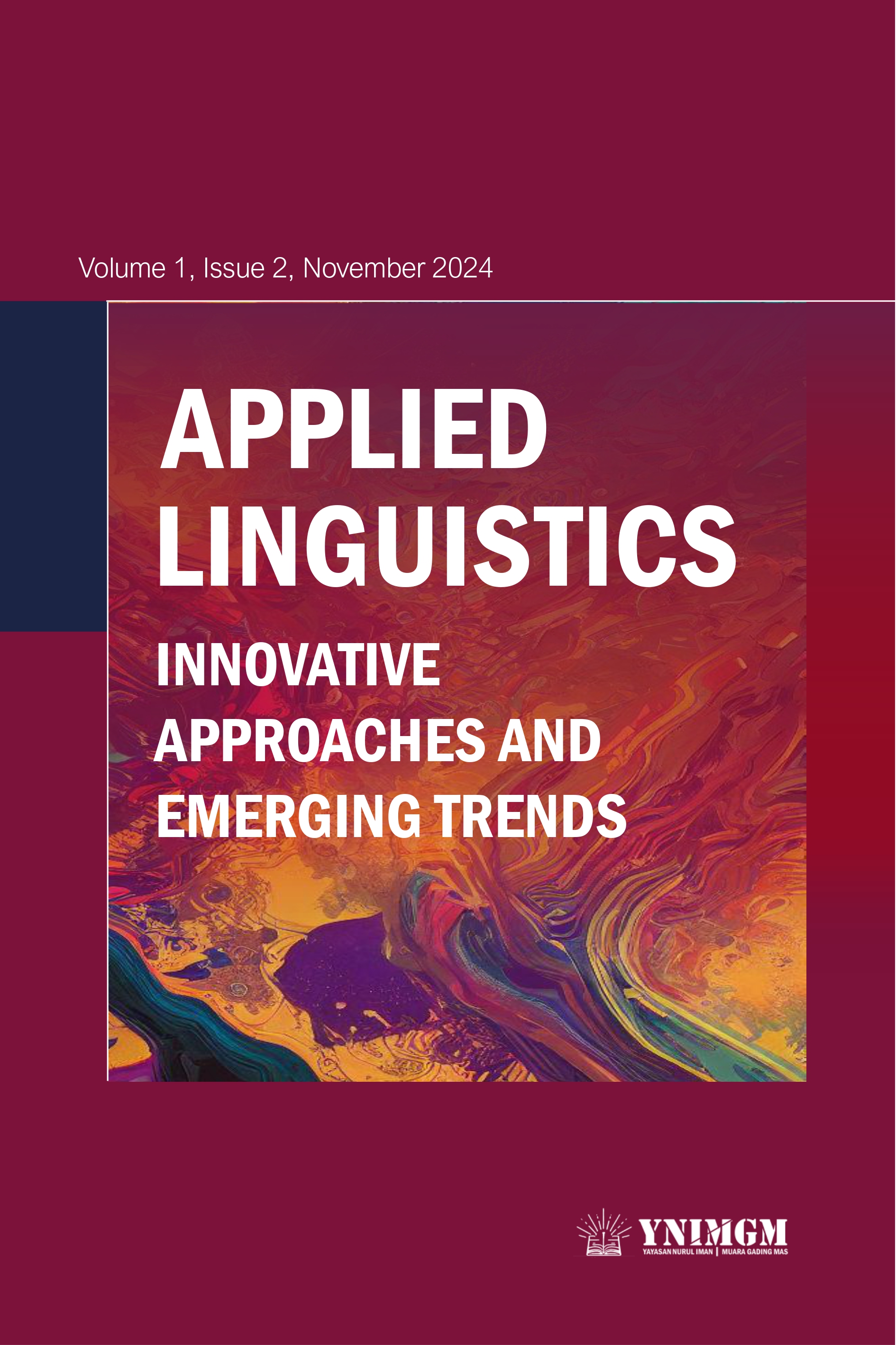Boosting Elementary Students’ Learning Interest: The Impact of The Question-And-Answer Method
Main Article Content
Abstract
This study examines the impact of the question-and-answer teaching method on elementary students’ interest in learning Indonesian at State Elementary School Inpres Dok VIII Atas Jayapura, Indonesia. Utilizing a qualitative approach, the research investigates students’ joy in learning, active participation, and the effectiveness of teacher strategies in fostering engagement. Findings indicate that the question-and-answer method enhances student creativity, improves learning outcomes, and develops critical thinking. However, challenges such as language anxiety and focus issues persist. The study emphasizes the importance of creative and dynamic teaching methods to boost student motivation and participation, proposing strategies for reducing classroom disengagement and enhancing interaction.
Downloads
Article Details

This work is licensed under a Creative Commons Attribution 4.0 International License.
How to Cite
References
Journals
Alghamdi, M., & Khadawardi, H. (2024). Investigating the Impact of Teacher Enthusiasm on Engagement Among Saudi First-Year EFL Students. International Journal of English Language Education, 12(2), 86–121. https://doi.org/10.5296/ijele.v12i2.22241
Daymiel, R. J., Cantina, J., Alipoyo, V. R. I., Comecilla, M. O., Patay, A. S., & Recamara, J. T. (2022). Anxiety in Second Language in Relation to Students’ Speaking Performance. Sprin Journal of Arts, Humanities and Social Sciences, 1(8), 396–410. https://doi.org/10.55559/sjahss.v1i08.41
Fitria, D., Jamaris, J., & Sufyarma, S. (2021). Implementation of Constructivism Learning Theory in Science. International Journal Of Humanities Education And Social Sciences, 1(3), 228–235. https://doi.org/10.55227/ijhess.v1i3.71
Garzón, J., Kinshuk, Baldiris, S., Gutiérrez, J., & Pavón, J. (2020). How Do Pedagogical Approaches Affect the Impact of Augmented Reality on Education? A Meta-Analysis and Research Synthesis. Educational Research Review, 31, 100334. https://doi.org/10.1016/j.edurev.2020.100334
Huashan, W. (2019). Chinese TESOL Students’ Perception of Their Speaking Anxiety in Workshops. Journal of Language and Cultural Education, 7(2), 21–50. https://doi.org/10.2478/jolace-2019-0010
Kasim, H. Y. bin, & Joseph, K. de. (2022). Teacher-Student Verbal Communication and Student Learning. International Journal of Curriculum Development, Teaching and Learning Innovation, 1(1), 13–20. https://doi.org/10.35335/curriculum.v1i1.53
Kharb, P., Samanta, P. P., Jindal, M., & Singh, V. (2013). The Learning Styles and the Preferred Teaching—Learning Strategies of First Year Medical Students. J Clin Diagn Res, 22(7), 1089–1092. https://doi.org/10.7860/JCDR/2013/5809.3090
Meng, S. (2023). Enhancing Teaching and Learning: Aligning Instructional Practices with Education Quality Standards. Research and Advances in Education, 2(7), 17–31. https://www.paradigmpress.org/rae/article/view/703
Nephawe, F. T., & Lambani, M. N. (2022). Use of Question-And-Answer Method in Teaching English Prepositions to Primary School Learners. International Journal of Language and Literary Studies, 4(3), 109–125. https://doi.org/10.36892/ijlls.v4i3.1000
O’Regan, C., Walsh, N., Hall, T., Mannion, G., & Millar, M. (2023). Conceptualising Student Engagement as a Theoretical Framework for Innovative Higher Education Practices: A Literature Review. All Ireland Journal of Higher Education, 15(2), 1–21. https://ojs.aishe.org/index.php/aishe-j/article/view/743
Tamba, L., Nababan, R., Perangin-angin, A., & Pardede, L. (2023). The Relationship Between Teacher’s Question and Answer Method on Students’ Learning Motivation. Jurnal Penelitian Pendidikan IPA, 9(8), 6720–6726. https://doi.org/10.29303/jppipa.v9i8.4546
Torong, S., Ambarita, W., & Manik, N. W. (2023). The Implementation of Question and Answer Method in Teaching Speaking Skill at Eight Grade of UPTDSMP Negeri 9 Pematang Siantar. Journal Corner of Education, Linguistics, and Literature, 2(3), 265–271. https://doi.org/10.54012/jcell.v2i3.142%0D
Tufail, I., Zaini, Z. A. H., & Rodliah, S. (2023). Classroom Management In Improving Learning Effectiveness. Jurnal At-Tarbiyat: Jurnal Pendidikan Islam, 6(1), 121–130. https://doi.org/10.37758/jat.v6i1.622
Wahyuningtyas, D. P., Solong, N. P., HS, N., Lahiya, A., & Muhammadiah, M. (2023). The Significance of Teachers’ Learning Management Skills for Successfull Early Childhood Education. Jurnal Scientia, 12(1), 126–131. https://doi.org/10.58471/scientia.v12i01.1056
Wijaya, H., Darmawan, I. P. A., Setiana, S. C., Helaluddin, H., & Weismann, I. T. J. (2021). Active Reconnecting Learning Strategies to Increase Student Interest and Active Learning. Indonesian Journal of Instructional Media and Model, 3(1), 26–37. https://doi.org/10.32585/ijimm.v3i1.1290
Proceedings
Nurfadillah, N., Muis, A. A., Khaisyurahman, A., & Sapitri, E. (2024). Behavioristic Learning Theory. Proceeding of International Conference on Education, Society, and Humanity, 2(1), 1268–1274. https://ejournal.unuja.ac.id/index.php/icesh/article/view/8039
Suprihatmojo, A. (2022). The Use of Question and Answer Method To Improve Student Achievement. Social, Humanities, and Education Studies (SHEs): Conference Series, 5(6), 301–304. https://doi.org/10.20961/shes.v5i6.81085
Ulfa, M., Oktaviany, V., & Anggita, P. A. (2022). Literacy-Based Question and Answer Method to Improve Questioning Ability. Proceeding of International Conference on Education, 68–74. https://doi.org/10.37640/ice.01.187
Books
Aqib, Z., & Murtadlo, A. (2016). Kumpulan Metode Pembelajaran Kreatif dan Inovatif. Satu Nusa.
Djamarah, S. B. (2015). Psikologi Pembelajaran (3rd ed.). PT Ranika Cipta.
Gajdamaschko, N. (2011). Lev Semenovich Vygotsky 1896–1934: Psychologist Author of Cultural-Historical Theory of Human Development. In M. A. Runco & S. R. Pritzker (Eds.), Encyclopedia of Creativity (2nd ed., pp. 95–99). Elsevier Inc. https://doi.org/10.1016/B978-0-12-375038-9.00231-4
Hasibuan, J. J., & Moedjiono, M. (2009). Proses Belajar Mengajar (T. Surjaman (ed.); 13th ed.). Remaja Rosdakarya.
Moleong, L. J. (2012). Metodologi Penelitian Kualitatif. PT Remaja Rosdakarya Offset.
Patanella, D., & Ebanks, C. (2011). Gardner’s Theory of Multiple Intelligences. In S. Goldstein & J. A. Naglieri (Eds.), Encyclopedia of Child Behavior and Development (pp. 681–682). Springer Science+Business Media, LLC. https://doi.org/10.1007/978-0-387-79061-9_1870

